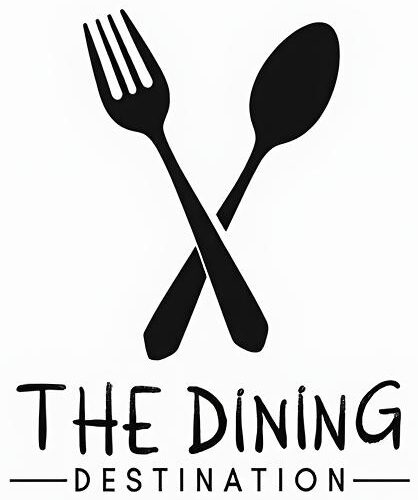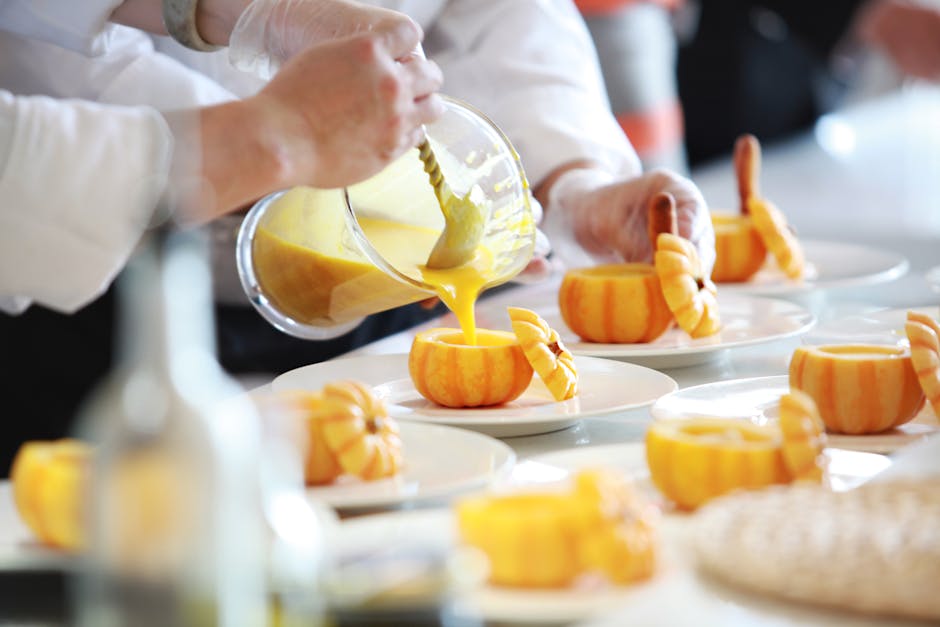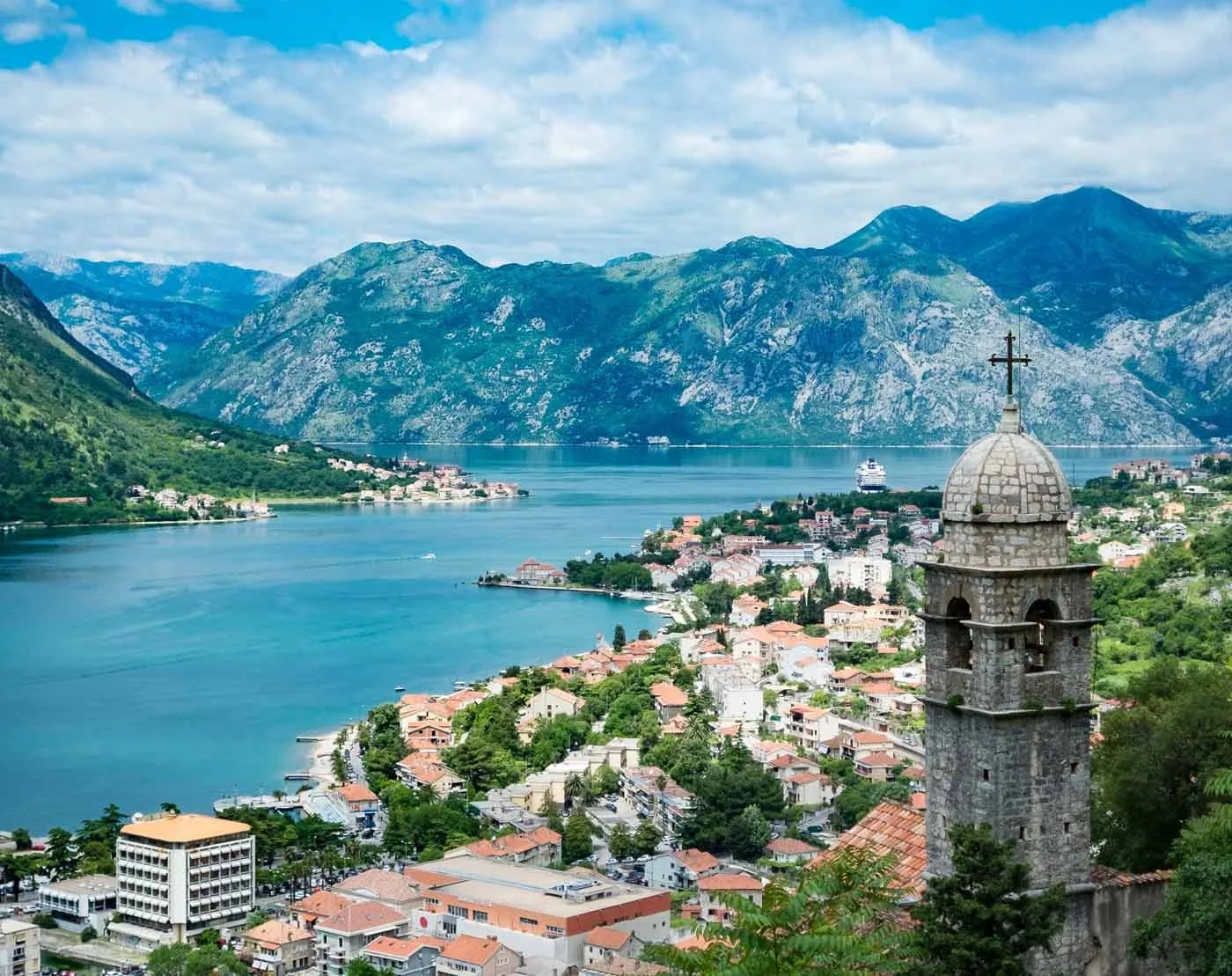When Taste Buds Meet Masterpieces: The Rise of Culinary Art Exhibitions
Culinary art exhibitions are immersive events that showcase food as an artistic medium while exploring cultural identity, history, and innovation through edible creations. For travelers seeking authentic food experiences, these exhibitions offer a perfect blend of gastronomy and visual art.
For quick reference, here are the key types of culinary art exhibitions you can explore worldwide:
| Exhibition Type | Description | Notable Examples |
|---|---|---|
| Museum Food Exhibitions | Historical and cultural food displays with artifacts | FOOD: Changing the American Table (Smithsonian) |
| Chef Showcases | Artistic food presentations by renowned chefs | Dinner is Served! The Story of French Cuisine |
| Culinary Competitions | Live cooking contests with artistic display elements | International Exhibition of Culinary Art (Culinary Olympics) |
| Cultural Food Exhibitions | Food traditions of specific cultures | What’s Cooking? Jewish Culinary Culture |
| Interactive Food Experiences | Hands-on participation in food creation | Julia Child: A Recipe for Life |
The world of culinary art exhibitions has exploded in recent years, blending the boundaries between what we eat and what we admire. These exhibitions transform food from mere sustenance into thought-provoking art that engages all our senses.
As Julia Child once said, “People who love to eat are always the best people” – and these exhibitions celebrate both the love of food and the artistry behind it. Whether you’re admiring Julia Child’s actual kitchen at the Smithsonian, exploring Mediterranean culinary traditions at Mucem’s “The Grand Meze,” or witnessing the competitive artistry at the Culinary Olympics, these exhibitions offer something for every food enthusiast.
What makes these exhibitions special is their ability to tell stories through food – stories of migration, identity, sustainability, and cultural exchange. Unlike traditional art shows, culinary exhibitions often include interactive elements where visitors can taste, smell, and sometimes even create the art themselves.
For the avid foodie traveler, these exhibitions provide a deeper understanding of global food cultures and offer authentic experiences that go beyond restaurant dining.

Culinary art exhibitions word list:
– Best culinary vacations
– Culinary tour companies
– Regional food festivals
What Exactly Are Culinary Art Exhibitions?
Have you ever walked through a gallery where you could actually taste the art? That’s the magic of culinary art exhibitions – they’re not just shows you observe, but experiences that engage all your senses.
Culinary art exhibitions transform food from simple sustenance into powerful artistic expression. These delightful spaces blend the worlds of gastronomy, visual arts, cultural studies, and history to create environments where food becomes both the medium and the message.
Unlike traditional museums with their “look but don’t touch” policies, these exhibitions invite you to dive in with all five senses. You might find yourself inhaling the aromatic steam from a perfectly prepared risotto, hearing the sizzle of ingredients hitting a hot pan, or even sampling flavors that tell stories of distant places and times.
These exhibitions come in wonderfully diverse forms. Some showcase the fascinating evolution of cooking tools and dining customs throughout history. Others celebrate food as an expression of cultural identity and heritage. You might encounter chef-focused showcases highlighting the creative genius behind culinary masterpieces, competitive displays judged on both taste and artistic presentation, or interactive installations where you become part of the creative process.
What makes culinary art exhibitions truly special is how they connect with our shared human experience. We all eat—it’s universal—yet our food traditions are deeply personal and culturally specific. Through these exhibitions, food becomes a lens for examining history, identity, migration, technology, and sustainability.
As Erik Wolf, Executive Director of the World Food Travel Association, beautifully puts it: “Food tourism is the act of traveling for a taste of place in order to get a sense of place.” Culinary art exhibitions extend this concept by creating spaces where you can travel through taste without ever leaving the exhibition hall.
How Culinary Art Exhibitions Differ from Traditional Art Shows
When you step into a culinary art exhibition, you’ll immediately notice some delicious differences from traditional art shows:
The Tasting Component: While you’d never dream of licking a Picasso, many culinary exhibitions actively encourage you to sample the displays. Taste becomes a crucial part of the artistic experience, engaging you in ways traditional art simply cannot.
Perishability and Temporality: Unlike paintings that hang in galleries for centuries, food art has a fleeting lifespan. This creates a wonderful sense of urgency and presence—you must be there in the moment to fully appreciate it before it changes or disappears.
The Chef as Curator: In these unique spaces, chefs step into roles typically reserved for artists and curators. Their expertise in flavor composition, presentation, and cultural context guides the exhibition narrative, beautifully blurring the line between craftsperson and artist.
Performance Elements: Many culinary art exhibitions feature live demonstrations or interactive elements that transform the typically static gallery experience into something dynamic and engaging. As one visitor to the Julia Child exhibition shared: “Operating a vintage video camera in the replica TV studio made me feel like I was actually on The French Chef set.”
Multisensory Engagement: While traditional art primarily engages your eyes (and sometimes ears), culinary exhibitions deliberately activate all five senses—the comforting aroma of freshly baked bread, the silky texture of handmade pasta, the rhythmic sound of a knife chopping vegetables—creating a richer, more holistic experience.
Cultural Accessibility: Food often provides a more welcoming entry point to cultural exploration than traditional fine art. Many visitors who might feel intimidated by abstract expressionism can immediately connect with exhibitions about familiar foods and cooking traditions.
These distinctive qualities make culinary art exhibitions particularly effective at creating memorable, immersive experiences that stay with you long after you’ve returned home. They invite everyone to the table, regardless of their art background, creating a shared space where food becomes the universal language.
Culinary Art Exhibitions Across the Globe
The global landscape of culinary art exhibitions is rich and diverse, with each region bringing its own flavors and perspectives to the table. From competitive showcases to historical retrospectives, these exhibitions offer windows into cultural identity, technological innovation, and artistic expression through food.

Spotlight: “Culinary art exhibitions” in North America
North America has acceptd culinary art exhibitions with open arms, creating some of the most innovative and engaging food-focused museum experiences you’ll find anywhere.
The Smithsonian’s FOOD: Changing the American Table has become something of a pilgrimage site for food lovers. At its heart sits Julia Child’s actual home kitchen, transplanted piece by piece into the museum. It’s not just a display—it’s a time capsule that captures a pivotal moment in American food culture. What makes this exhibition special is the “Open Table” feature—a large communal table where visitors can sit down and chat about everything from family recipes to food politics. Rather than just observing history, you become part of an ongoing conversation about our relationship with food.
If you’ve ever dreamed of stepping into Julia’s world, the traveling exhibition Julia Child: A Recipe for Life makes it possible. When it visits museums like the Cincinnati Museum Center or the Muskegon Art Museum, visitors don’t just learn about Julia—they become part of her story. You can stand in a replica of her famous TV kitchen, play with vintage cameras, and pretend to mix ingredients just like she did. As one delighted visitor put it, “I felt like Julia was going to walk in any minute and offer me a glass of wine!”
What makes North American culinary art exhibitions stand out is their playful, hands-on approach. These aren’t stuffy, look-but-don’t-touch affairs—they’re lively, interactive experiences that invite you to engage with food history using all your senses. They blend education with entertainment in a way that appeals to serious foodies and casual visitors alike.
Spotlight: “Culinary art exhibitions” in Europe & the Mediterranean
When it comes to culinary art exhibitions, Europe and the Mediterranean bring centuries of gastronomic tradition and a certain reverence for food heritage that shines through in their presentations.
The International Exhibition of Culinary Art (IKA) in Stuttgart—better known as the “Culinary Olympics”—is the granddaddy of all food competitions. Since 1900, chefs from around the world have gathered to create edible masterpieces that push the boundaries of what food can be. Picture 1,600 chefs from 54 countries changing simple ingredients into breathtaking sculptures and displays. This isn’t just cooking—it’s performance art with food as the medium. As the New York Times explored in their coverage of the Bocuse d’Or, these competitions lift cooking to an Olympic sport.

The French, with their deep culinary pride, created “Dinner is Served! The Story of French Cuisine” at Montreal’s Pointe-à-Callière museum. This exhibition assembled nearly 1,000 remarkable objects that tell the story of French dining, from the introduction of the fork to the elaborate performance of formal service styles. Walking through, you can trace how dining customs reflect broader social changes and cultural values—it’s like reading French history through its dinner plates.
Perhaps the most ambitious European food exhibition is “The Grand Meze” at Mucem in Marseille. Running from 2021 to 2024, this massive undertaking brings together 550 objects from 35 different museums to tell the story of Mediterranean food from farm to table. What makes it fascinating is how it weaves together ancient traditions with modern concerns like sustainability. As curator Edouard de Laubrie eloquently explains, “There is no single Mediterranean diet but multiple regional variants shaped by geography, history, invading civilizations, religions and socioeconomic factors.”
European culinary art exhibitions tend to have a certain gravitas—they treat food with the same seriousness typically reserved for fine art or historical artifacts. They excel at showing how food traditions are living links to our past while also serving as platforms for discussing urgent contemporary issues like food sovereignty and cultural preservation.
Spotlight: “Culinary art exhibitions” in Asia & Beyond
Asian culinary art exhibitions often reveal the profound connections between food, spirituality, and cultural identity in ways that can be both surprising and illuminating.
“The Way We Eat” at the Art Gallery of New South Wales took the provocative stance that you can learn everything about a person by looking at their plate. This thoughtful exhibition paired ancient treasures with contemporary artworks to show how food traditions evolve while remaining culturally significant. By placing historical artifacts alongside modern interpretations, visitors could see the continuous thread of food culture stretching across generations—a visual reminder that what and how we eat reveals our deepest values.
Japan’s “Itadakimasu: Little Hidden Stories in the Anime Kitchen” took a delightfully unexpected approach by exploring the intersection of Japanese cuisine and animation. The exhibition featured perfect replicas (shokuhin sampuru) of dishes made famous in beloved anime series, alongside cooking demonstrations and a companion cookbook. It was a brilliant recognition of how pop culture has become one of the most powerful ambassadors for Japanese food traditions globally.

What makes Asian culinary art exhibitions distinctive is their frequent exploration of the spiritual dimensions of eating. Many exhibitions highlight concepts like mindfulness in food preparation, the symbolic meaning of ingredients, and the ritualistic aspects of sharing meals. Food isn’t just presented as sustenance or even art—it’s portrayed as a path to understanding deeper cultural values and philosophical perspectives. These exhibitions often leave visitors contemplating not just what they eat, but why and how they eat it.
From North America’s playful interactivity to Europe’s historical depth and Asia’s philosophical insights, culinary art exhibitions around the world reflect our universal connection to food while highlighting the beautiful diversity in how we understand and celebrate our culinary heritage. These exhibitions offer food travelers more than just information—they provide rich, contextual experiences that deepen our appreciation for the cultures we encounter on our global food journeys.
Themes, Technology & Visitor Engagement
Culinary art exhibitions have evolved into fascinating cultural experiences that go far beyond simple displays of cooking tools or historical recipes. Today, these exhibitions tackle complex themes that reflect our modern world while using innovative technology to create experiences that stick with you long after you’ve left.
Key Themes in Modern Culinary Exhibitions
Food tells stories about who we are and where we come from. At the POLIN Museum in Warsaw, the “What’s Cooking? Jewish Culinary Culture” exhibition uses traditional Jewish dishes to trace how communities adapted as they moved across continents. Their thoughtful tagline captures this perfectly: “Show me your plate and I will tell you who you are: where you hail from, who your ancestors were, who your neighbours are and what lifestyle you lead.”
The way foods cross borders and transform cultures is another fascinating theme. The Smithsonian’s “FOOD: Changing the American Table” shows how Mexican flavors gradually became part of everyday American eating, telling a larger story about cultural exchange that happens one taco at a time.
As climate concerns grow, many culinary art exhibitions now tackle sustainability head-on. At Mucem’s “The Grand Meze,” visitors confront the environmental impact of industrial food production while finding hopeful alternatives from local Provence-Alpes-Côte d’Azur farmers and producers.
Food often serves as an emotional lifeline for people who’ve left their homelands. The Smithsonian’s “The Migrant’s Table” section shares touching personal stories of immigrants who maintained connections to their roots through family recipes, even as they adapted to new ingredients and cooking methods.
Some exhibitions even take a critical look at our complicated relationship with eating itself. The Smithsonian’s striking “Diet Spiral” – a towering sculpture made entirely of diet books – visually captures the often contradictory and cyclical nature of nutritional advice over decades.
Technology and Design Innovations
Walking through a modern culinary art exhibition might involve experiences that engage all your senses:
Imagine standing in a gallery where video projections show bread being kneaded by hands that lived centuries ago, or where interactive screens let you virtually “cook” alongside a famous chef. Digital media brings static displays to life in ways that weren’t possible even a decade ago.
Some forward-thinking exhibitions have even incorporated aroma technology – carefully calibrated scent diffusers that release the smell of freshly baked bread or simmering spices at just the right moment. As one visitor commented, “Smelling the herbs used in Mediterranean cooking while viewing the artifacts made everything feel more real.”
The recreation of entire environments transports visitors through time and space. Standing in Julia Child’s carefully reconstructed kitchen at the Smithsonian, you can almost hear her distinctive voice explaining how to truss a chicken.

Interactive Installations That Make You Part of the Art
What truly sets today’s culinary art exhibitions apart is how they invite you to participate rather than just observe. These aren’t stuffy, hands-off museum experiences – they’re invitations to engage:
The “Open Table” at the Smithsonian’s FOOD exhibition brings strangers together around a communal table to share food stories and memories. These conversations often become as meaningful as the official exhibition content, creating connections between visitors from different backgrounds.
Virtual reality kitchens let you try your hand at historical cooking techniques without the risk of burning anything. Specialized aroma pods invite you to experience the distinct scent profiles of spices from around the world. Some exhibitions even include workshops where you can try creating Japanese shokuhin sampuru (those incredibly realistic food replicas you see in restaurant windows).
And yes, many exhibitions now include actual tasting stations – perhaps the most direct way to understand food culture is simply to try it yourself!
As one delighted visitor to the Julia Child exhibition shared, “Using an operable vintage video camera in the replica TV studio made me feel like I was part of the show rather than just watching it.” These hands-on experiences create emotional connections that stick with you long after the visit ends.
Artists & Chefs as Storytellers
In culinary art exhibitions, chefs have emerged as powerful cultural storytellers whose work bridges taste and meaning.
Many exhibition curators now recognize that chefs who approach food with artistic intentions are creating more than just meals – they’re crafting sensory experiences that communicate cultural values and personal vision. Their plated creations become temporary sculptures that challenge our understanding of what “art” can be.
Traditional food artisans – from bread bakers to chocolate sculptors – are finally getting the recognition they deserve. Their specialized knowledge represents important cultural heritage that exhibitions help preserve and celebrate. As one sourdough baker featured in a recent exhibition noted, “This starter is older than I am – I’m just its current caretaker.”
The most compelling exhibitions don’t just feature celebrity chefs – they incorporate stories from home cooks and community members. The Smithsonian’s communal table creates space for visitors to share their own food memories, recognizing that culinary knowledge exists in grandmothers’ kitchens as much as in fancy restaurants.
Beautiful food photography plays a crucial role in many exhibitions. The Julia Child exhibition features photographs by her husband Paul that capture her journey from novice to icon, adding personal warmth to the historical narrative.
Even the way food appears on a plate has gained recognition as a legitimate form of visual art. As one exhibition text thoughtfully observed, “Food should be savoured visually as much as gustatorily,” acknowledging that eating engages all our senses.
Through these rich and varied approaches, culinary art exhibitions lift food from mere sustenance to a sophisticated medium for artistic expression and cultural storytelling. By highlighting the creative individuals behind our food traditions, these exhibitions help us develop a deeper appreciation for the thought, skill, and cultural knowledge embodied in what we eat.
For more insights into how dining is becoming more interactive and experiential, check out our article on Interactive Dining or explore the fascinating relationship between Food and Architecture.
Competitions, Festivals & the Exhibition Circuit
The world of culinary art exhibitions isn’t confined to hushed museum galleries—it pulses with life across competitive showcases, festivals, and traveling exhibitions that form a vibrant global circuit for culinary creativity. These events blend the thrill of competition with artistic expression, creating unforgettable food experiences that engage all the senses.
The International Exhibition of Culinary Art (IKA), affectionately known as the Culinary Olympics, stands as the crown jewel of competitive culinary exhibitions. Born in Frankfurt, Germany in 1900, this spectacular event has grown into the world’s largest culinary showcase, with 54 nations and a staggering 1,600 chefs participating as of 2012.
What makes the IKA truly special isn’t just its size—it’s the magical fusion of technical mastery with artistic vision. Watching chefs compete in categories like Culinary Art and Pâtisserie feels like witnessing athletic competition and gallery opening rolled into one delicious package. When Sweden claimed first place in both the main and Junior Team competitions in 2012, it wasn’t just a win—it was international culinary prestige at its finest.

The American Culinary Federation (ACF) National Convention brings its own flavor to the exhibition circuit. This yearly gathering does more than just educate—it showcases chef competitions where technical skill and artistic imagination collide in spectacular fashion. As the ACF puts it, “Competitions play a vital role in culinary arts as they continually raise standards of excellence.” You can feel the electricity in the air as chefs push boundaries and redefine what’s possible on a plate.
Then there’s the Bocuse d’Or—often called the culinary equivalent of the Olympics—named after the legendary French chef Paul Bocuse. This biennial world chef championship takes food artistry to breathtaking heights. The presentation platters aren’t just meals; they’re edible sculptures that demonstrate culinary technique and artistic composition at their absolute peak. Watching teams compete is like seeing haute cuisine and fine art have a beautiful baby right before your eyes.
These competitive exhibitions serve as more than just spectacles—they’re transformative forces in the culinary world:
Career Impact: A chef who shines at these prestigious competitions can see their career trajectory change overnight, much like an artist after a successful gallery exhibition. These events create culinary stars.
Nation Branding: Countries showcase their culinary heritage with pride, turning food into a form of cultural diplomacy that speaks a universal language. A winning team brings national honor that transcends borders.
Technical Innovation: The competitive heat pushes chefs to pioneer techniques and presentations that eventually filter down to influence what we eat in restaurants worldwide. Today’s competition showpiece might be tomorrow’s dining trend.
Public Education: When competitions open their doors to the public, food enthusiasts can witness high-level culinary artistry firsthand, inspiring home cooks and future chefs alike with what’s possible.
How Competitions Shape “Culinary art exhibitions”
The competitive culinary world has left its delicious fingerprints all over how culinary art exhibitions have evolved:
Showpieces and Display Techniques: Those jaw-dropping sugar sculptures, chocolate constructions, and ice carvings that impress at competitions have raised the bar for food presentation in museums. The visual language of competitive food art has transformed how curators think about displaying culinary heritage.
Judging Criteria: When competitions formalized ways to evaluate both technical execution and artistic merit, they helped legitimize food as a serious artistic medium worthy of critical attention. These standards have given curators new frameworks for thinking about food as art.
Live Demonstrations: There’s something magnetic about watching a chef create under pressure. Museums and galleries have borrowed this dramatic element, incorporating live programming that adds both excitement and educational depth to exhibitions. Visitors don’t just see the finished product—they witness the creative process.
Media Coverage: The cameras love competitive culinary events, and the resulting media attention has raised public awareness of food as an art form. This visibility builds broader audiences who then seek out non-competitive exhibitions to deepen their appreciation.
The Global Culinary Travel Awards, established in 2016, represent another fascinating dimension of this exhibition circuit. These awards celebrate excellence in food tourism experiences, including exhibitions showcasing local culinary traditions. Winners gain exposure to over 100,000 trade and media professionals, amplifying their reach and bringing more visitors to experience their culinary showcases.
At The Dining Destination, we’ve watched these competitive events spark curiosity and draw new audiences into culinary arts. They serve as flavorful gateways that inspire visitors to explore more traditional museum exhibitions about food history and culture, creating a wonderful cycle of engagement with our shared culinary heritage.
Cultural Impact, Sustainability & Future Directions
Culinary art exhibitions are doing much more than showing off pretty food displays – they’ve become powerful forums for tackling the big questions about our food systems. These exhibitions are evolving to address everything from cultural preservation to environmental sustainability, offering thoughtful perspectives on how we eat today and how we might eat tomorrow.
The Authenticity Debate
When it comes to food, what does “authentic” really mean? This question sits at the heart of many modern food exhibitions. At Mucem’s “The Grand Meze,” visitors find that Mediterranean cuisine isn’t one single tradition but a vibrant mix shaped by countless influences. As the exhibition beautifully puts it: “There is no single Mediterranean diet but multiple regional variants shaped by geography, history, invading civilizations, religions and socioeconomic factors.”
Today’s culinary art exhibitions tend to avoid simplistic “this is the real way” narratives. Instead, they celebrate how food traditions breathe and change while maintaining their cultural soul. They show us that authenticity isn’t about rigid recipes frozen in time – it’s about the living, evolving relationship between people and their food.
Farm-to-Gallery Concepts
Why just look at pictures of farms when you can experience one? Forward-thinking exhibitions are now incorporating actual food production into their design. Some feature working gardens right on the premises, while others partner with local farmers to supply fresh ingredients for tastings and demonstrations.
The Provence-Alpes-Côte d’Azur region, spotlighted in “The Grand Meze” exhibition, offers a wonderful example with its impressive organic farming rates (29% of agricultural land) and thriving direct-to-consumer networks. By showcasing these regional success stories, exhibitions inspire visitors to seek out similar initiatives back home. The gallery becomes not just a place to learn about food, but a starting point for changing how we interact with our food systems.
Technology-Driven Tasting Experiences
Technology is revolutionizing how we experience food in exhibition spaces. Imagine walking through a historical food display and suddenly catching the aroma of a 19th-century feast, or using augmented reality to see how a complex dish comes together step by step.
Some cutting-edge exhibitions are experimenting with flavor printers, sensory substitution devices, and other innovations that let visitors “taste” in entirely new ways. These technologies are especially valuable when presenting historical recipes or endangered food traditions that can’t be directly sampled. They’re not replacing real food experiences but expanding what’s possible within museum walls.
Climate Messaging and Environmental Awareness
As climate concerns grow, culinary art exhibitions are tackling environmental issues head-on. “The Grand Meze” exhibition doesn’t shy away from criticizing industrial agriculture for “disrespecting resources and workers” while championing alternatives like community-supported agriculture networks.
Similarly, the Smithsonian’s “FOOD” exhibition includes thoughtful sections on brewing and winemaking that address how these ancient practices are adapting to climate change. By connecting everyday food choices to larger environmental issues, these exhibitions help visitors see the planetary impact of what’s on their plates – without preaching or finger-wagging.
Community Workshops and Participatory Design
The most exciting culinary art exhibitions today aren’t just talking at visitors – they’re inviting them into conversation. Leading exhibitions now involve community members from the planning stages, incorporate diverse perspectives, and create spaces for ongoing dialogue.
The Smithsonian’s “Open Table” installation beautifully demonstrates this approach. By simply providing a communal table where visitors can sit and talk about food issues, they transform the museum from a place of passive observation to one of active exchange and community building. The conversations that happen around that table become part of the exhibition itself.
At The Dining Destination, we’re watching with excitement as culinary art exhibitions evolve into vital spaces for cultural exchange, environmental education, and sensory exploration. By bringing together chefs, farmers, historians, artists, and community voices, these exhibitions are helping shape more thoughtful, sustainable, and delicious food futures.
Educational Programs That Extend the Exhibit Experience
The learning doesn’t stop when you exit the gallery. Modern culinary art exhibitions offer rich educational programming that deepens the experience:
Chef Talks and Demonstrations bring exhibitions to life through the skilled hands of culinary experts. At the Julia Child exhibition, visitors can watch live cooking demonstrations using recipes taken directly from Julia’s personal notes – complete with her handwritten adjustments and margin comments.
Hands-On Classes transform visitors from observers to participants. The “Better with Butter Class” at the Julia Child exhibition doesn’t just tell you about Julia’s cooking philosophy – it lets you experience it firsthand, butter smears and all.
Virtual Catalogs and Online Resources extend the exhibition experience beyond physical visits. The “What’s Cooking? Jewish Culinary Culture” exhibition offers a comprehensive e-book that visitors can explore at home, diving deeper into the stories behind the dishes.
Youth Trails and Family Programming ensure that visitors of all ages can connect with exhibition themes. “The Way We Eat” exhibition features specially designed children’s labels and activity trails that make complex food concepts accessible and fun for younger visitors.
STEAM Connections weave together culinary arts with science, technology, engineering, and mathematics. Activities like printmaking with fruit sections create memorable learning experiences that connect different disciplines through food.
Through these thoughtful educational components, culinary art exhibitions become much more than interesting displays – they transform into launching pads for new skills, perspectives, and relationships with food that visitors carry with them long after they leave.
Frequently Asked Questions about Culinary Art Exhibitions
What makes an exhibition “culinary” rather than just food-related?
When you walk into a true culinary art exhibition, you’re experiencing something that goes far beyond a simple display of ingredients or kitchen tools. These exhibitions transform food from mere sustenance into a rich medium for artistic expression and cultural storytelling.
Think of it this way: while a food-related display might simply showcase different types of pasta or antique cooking utensils, a culinary art exhibition digs deeper into the creative processes, cultural contexts, and artistic vision behind our food traditions. These exhibitions celebrate food as an art form with its own aesthetics, techniques, and creative practitioners.
“We’re not just showing what people ate,” as one curator beautifully put it, “but how food shapes identity, communicates cultural values, and serves as a medium for artistic expression.”
The most compelling culinary art exhibitions weave together multiple elements – the artistic presentation of dishes, the historical context of eating traditions, the sensory experience of taste and smell, and the stories of the creative individuals (from renowned chefs to home cooks) who have shaped our culinary landscapes. They invite us to see the artistry in something we might otherwise take for granted.
How do museums keep edible displays fresh and safe?
The ephemeral nature of food presents unique challenges for museum professionals, who have developed clever strategies to showcase culinary creations without the bread getting moldy or the vegetables wilting under display lights!
Many exhibitions rely heavily on incredibly realistic food replicas rather than actual edible items. The Japanese tradition of shokuhin sampuru (those amazingly lifelike food models you might have seen in restaurant windows) has been particularly influential here. These replicas capture the visual appeal of everything from a perfect croissant to a bowl of ramen without the preservation headaches.
When exhibitions do incorporate real food, museum teams employ preservation techniques like dehydration or freeze-drying to extend shelf life while maintaining visual appeal. You’ll often find these items displayed in specialized cases with carefully controlled temperature, humidity, and lighting.
For fresh food displays, behind-the-scenes staff follow meticulous rotation schedules, replacing items before they begin to deteriorate. Many museums have formed creative partnerships with local farms and food producers, who provide regular deliveries of fresh ingredients for demonstrations or temporary displays.
Rest assured that health and safety regulations are strictly followed. Any food intended for visitor consumption is prepared in licensed facilities according to local health codes – museum professionals understand that food safety is just as important as cultural education!
Can visitors actually taste the art at these shows?
The tasting aspect of culinary art exhibitions varies widely, which is part of what makes each exhibition unique. Some offer robust sensory experiences while others focus more on visual and historical elements.
Many exhibitions feature dedicated tasting stations where you can sample foods related to the themes being explored. During my visit to one Julia Child exhibition, I was delighted to find a station offering small tastes of classic French dishes prepared according to her original recipes – a perfect complement to the historical displays.
Live cooking demonstrations often include the most direct tasting opportunities, with audience members invited to sample freshly prepared dishes. These moments create powerful connections between the visual presentation of food and its ultimate purpose – to be enjoyed!
Museums frequently coordinate with their on-site restaurants or cafés to extend the exhibition experience to your meal. After exploring a Mediterranean food exhibition, you might find the museum café offering a special menu of regional dishes that allows you to literally digest what you’ve learned.
Special events and food festivals tied to exhibitions typically offer the most extensive tasting opportunities. Many museums host evening events where local chefs prepare dishes inspired by exhibition themes, creating a more immersive experience than is possible during regular hours.
For those who want to continue the experience at home, exhibition gift shops often offer companion cookbooks, ingredient kits, or recipe cards that let you recreate exhibition-related foods in your own kitchen.
Before planning your visit to a culinary art exhibition, we at The Dining Destination recommend checking the museum’s website for details about tasting opportunities. This helps set appropriate expectations and ensures you don’t miss special demonstrations or events that might improve your experience.
Conclusion
Culinary art exhibitions have blossomed into something truly special – bridging the worlds of museums and food tourism in ways that delight all our senses. These exhibitions transform our relationship with food, elevating it from something we simply consume to an art form worthy of thoughtful appreciation and study.
What a journey we’ve taken together! From standing in Julia Child’s carefully recreated kitchen at the Smithsonian to witnessing the breathtaking artistic feats at the Culinary Olympics; from exploring the rich mix of Jewish food traditions in Warsaw to marveling at anime-inspired Japanese cuisine displays. Despite their diversity, these exhibitions share a common thread – they recognize food as a powerful carrier of cultural meaning and a window into our shared humanity.
What makes culinary art exhibitions truly special is their ability to engage all our senses, not just sight. They invite us to participate rather than merely observe, making complex cultural and historical concepts accessible through something we all understand – food. As one visitor to the Julia Child exhibition remarked, “I never thought a museum could make me hungry and nostalgic at the same time!”

Here at The Dining Destination, we’re passionate about connecting food lovers with these immersive cultural experiences worldwide. Whether you’re planning a dedicated food-focused vacation or simply looking to add a culinary exhibition to your next journey, these showcases offer rich opportunities to deepen your appreciation of global food cultures.
The future looks incredibly bright for culinary art exhibitions. Emerging technologies are creating new possibilities for sensory engagement, while growing emphasis on sustainability and environmental awareness is reshaping exhibitions’ content. Perhaps most exciting is the increasing recognition of diverse culinary traditions beyond European influences, bringing fresh perspectives to the table.
We invite you to explore our comprehensive guides to best culinary vacations, connect with specialized culinary tour companies, and find regional food festivals that might perfectly complement your visits to these remarkable exhibitions.
Food tells our story – who we are, where we’ve come from, and how we connect with others. Culinary art exhibitions celebrate this profound truth while delighting our senses and expanding our culinary horizons. We hope this guide inspires you to experience these extraordinary intersections of food and art for yourself. After all, some of life’s most meaningful moments happen around food – why not make your next museum visit one of them?








1 thought on “When Food Meets Art: Culinary Exhibitions Around the World”
Pingback: Forkcast 2025: Dining Trends You Didn’t See Coming - The Dining Destination
Comments are closed.